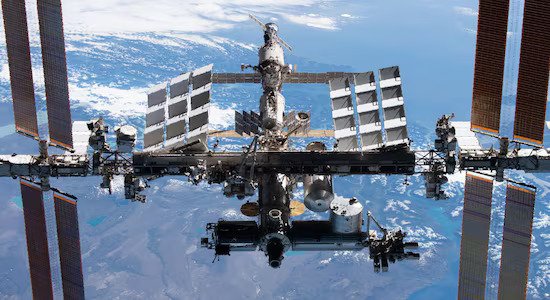NASA astronauts Sunita Williams and Butch Wilmore are now navigating an extended mission aboard the International Space Station (ISS), with their stay potentially stretching until 2025. Originally slated for a return within a week of their June 5, 2024 launch on Boeing’s Starliner, unforeseen complications have significantly delayed their timeline, extending their stay to over eight months. Due to issues with the Starliner, the astronauts might now return on SpaceX’s Crew Dragon, turning Boeing’s inaugural human spaceflight into a complex rescue operation.
NASA astronauts Sunita Williams and Butch Wilmore are facing a significantly extended stay aboard the International Space Station (ISS), potentially lasting until 2025. Originally scheduled to return within a week of their June 5, 2024 launch on Boeing’s Starliner, unforeseen complications have pushed their timeline to over eight months. With issues arising from the Starliner, their return may now be facilitated by SpaceX’s Crew Dragon, transforming Boeing’s inaugural human spaceflight into a complex rescue mission.

Space Radiation Risks
The ISS, orbiting approximately 400 km above Earth, exposes its residents to heightened levels of solar radiation due to its location beyond the protection of Earth’s atmosphere and magnetic field. The ISS travels through an area near the eastern coast of South America where radiation levels are more than 30 times higher than those on Earth. Astronauts are exposed to radiation levels equivalent to a full year’s worth of Earth-based exposure in just one week. This increased radiation poses significant health risks, including cancer, tissue damage, and impaired nervous system function. Prolonged exposure can also weaken astronauts’ immune systems, making them more susceptible to infections and potential reactivation of dormant microbes.

Impact of Microgravity
Extended exposure to microgravity presents additional challenges. On Earth, gravity exerts a constant force that our bodies are adapted to resist. In space, the absence of gravity leads to the loss of bone and muscle mass, with astronauts losing approximately 1% of their bone mass each month. This loss affects critical areas like the lower vertebrae, hips, and femur, increasing the risk of injury and reducing physical capabilities. Additionally, bodily fluids shift towards the upper body, resulting in the characteristic ‘puffy’ appearance and potentially impacting speech, motor control, and sensory perceptions.

Psychological Strain
The psychological impact of an unexpectedly extended mission is also significant. Isolated 400 km above Earth, astronauts face mental strain due to the distance from family and familiar surroundings. The uncertainty surrounding their return and technical issues with their spacecraft contribute to the stress experienced by Williams and Wilmore.

NASA’s Contingency Plans
In response to these challenges, NASA is exploring alternative return options. Steve Stich, Manager of NASA’s Commercial Crew Program, highlighted ongoing preparations with SpaceX for a potential Crew Dragon return. “We have been working with SpaceX to ensure that they are ready to respond on Crew 9… returning Butch and Suni on Crew 9 if we need that,” Stich explained. The final decision on the return strategy remains pending.

Astronauts’ Resilience
Despite the difficulties of their extended mission, Williams and Wilmore remain optimistic. During a press conference from space on July 10, 2024, Williams shared her experience of observing a hurricane’s development, while Wilmore expressed confidence in their return, emphasizing the team’s adaptability based on new data.

Family Reactions
Williams’s husband, Michael, expressed his support, noting, “Space was her happy place, even if she had to be there indefinitely.” Wilmore’s family is adjusting to the extended mission with composure, with his wife, Deanna, commenting, “We probably don’t expect him until February, February or March.”
The extended mission raises serious health and psychological concerns, highlighting the resilience and dedication of astronauts facing unprecedented challenges in space.








































